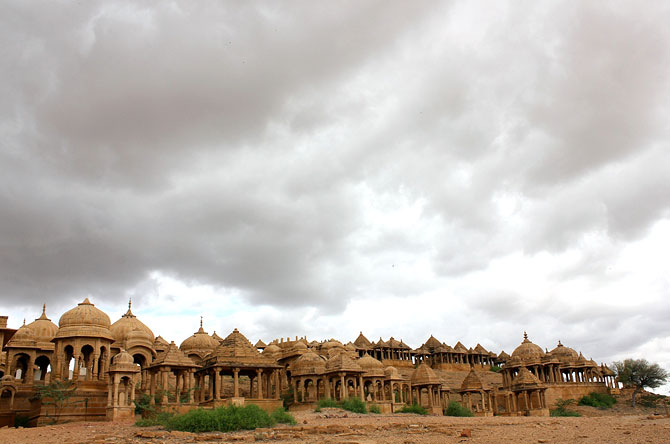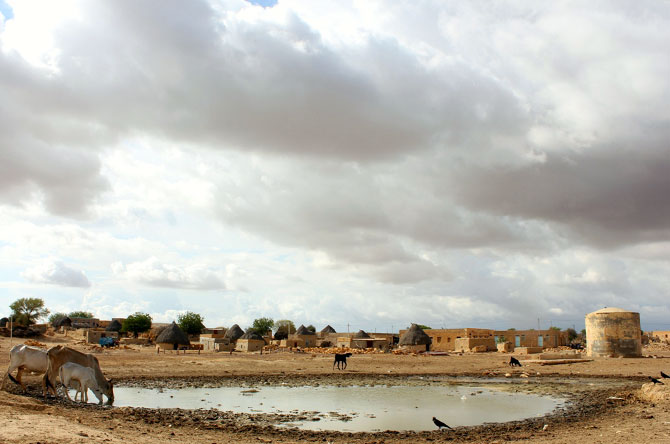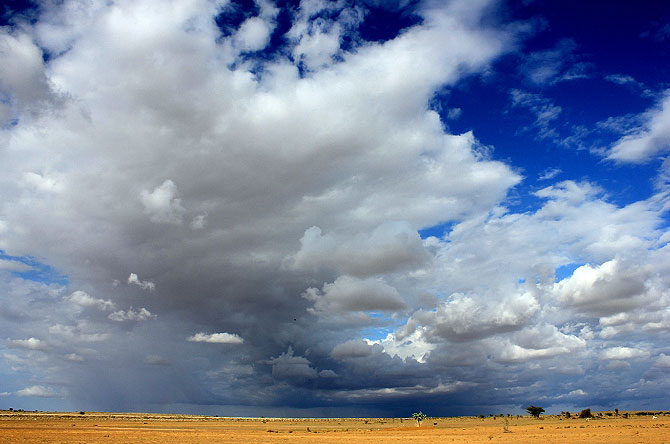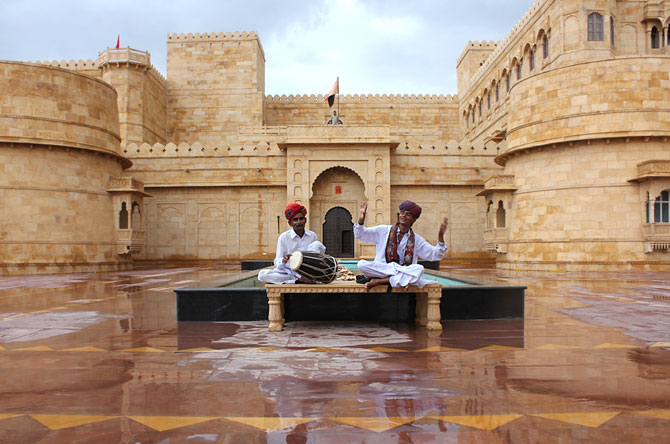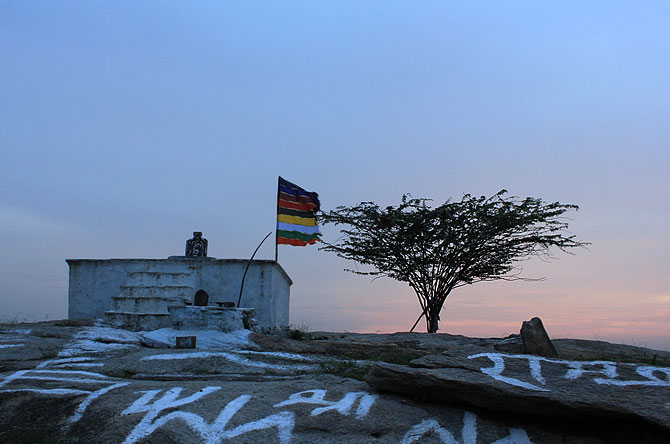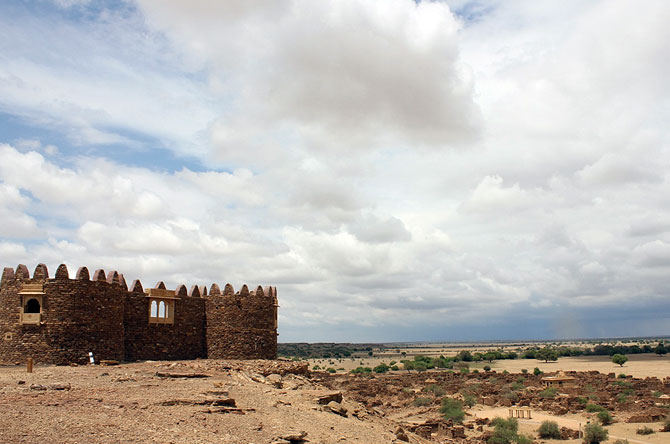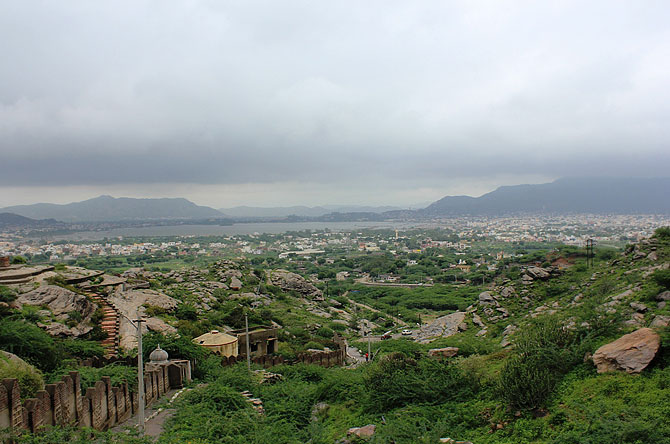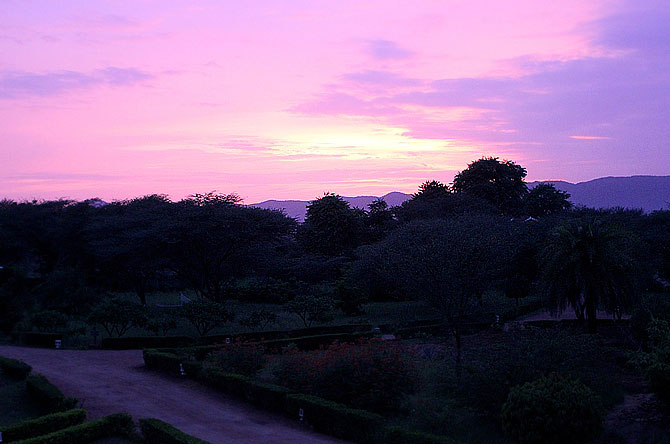 | « Back to article | Print this article |
Photos: Chasing the rains in Jaisalmer
Get Ahead reader Mridula Dwivedi, an academician from Gurgaon who blogs at Travel Tales from India, visited Rajasthan in August and sent us these amazing pictures.
Rajasthan is beautiful in the monsoons. The desert blooms with patches of green, the blues and yellows become more pronounced and the water bodies fill up to the brim.
I visited Jaisalmer, Pushkar, Ajmer and Lakshman Sagar in August and I was pleasantly surprised by the completely different look of Rajasthan from what I was expecting.
The clouds were so low at Pushkar that it felt I was at Rishikesh.
Click on NEXT for more photos
Photos: Chasing the rains in Jaisalmer
This was a small village near Jaisalmer, on the way to Desert National Park.
The park is closed during the monsoons as it was breeding season for the critically endangered Great Indian Bustard.
A little ahead of the village we actually sighted the magnificent creature. It is such a pity that it is so critically threatened.
Unfortunately, the Great Indian Bustard, one of the largest flying bird species in the world, flew away before we could take a picture.
Photos: Chasing the rains in Jaisalmer
Get away a little distance from the main city of Jaisalmer and the landscape becomes flat. I could see for miles around.
It presents marvelous vistas on regular days, but with low hanging clouds it became a double delight.
Photos: Chasing the rains in Jaisalmer
Pushkar is famous for the Brahma Temple and the holy lake -- the Pushkar Sarovar. The small, colorful market is also a shoppers' delight.
The day we visited it was raining intermittently and it added to the charm.
Photos: Chasing the rains in Jaisalmer
We passed by this wild sunflower field with low hanging clouds on the Aravali Ranges as we got out of Pushkar.
It was difficult to believe we were in the desert state of Rajasthan and not a hill station.
Photos: Chasing the rains in Jaisalmer
Jaisalmer was my first monsoon trip this year and I was skeptical. After all, it is a desert state, it does not receive much rain, right?
But within a few hours of my arrival it rained in Jaisalmer. The courtyard floor glistened with rainwater and we could see the reflection of the two singers.
Photos: Chasing the rains in Jaisalmer
I love the sunset in Rajasthan. However, because of the monsoon season they were mostly muted.
This picture was taken at sundown in the local Nag Devta temple at Lakshman Sagar near Pali.
Lakshman Sagar was the former hunting lodge of the Maharaja of Raipur which has now been converted into a beautiful hotel with 12 cottages. The local temple is within the premises.
Photos: Chasing the rains in Jaisalmer
Khaba Fort and village belonged to the Paliwal Brahmins along with the main village, Kuldhara.
According to legend, the chief’s daughter was threatened by the local ruler and the Paliwals vacated 84 villages overnight. They cursed Kuldhara before leaving.
Khaba is part of the same legend, only it is not cursed. So not too far from the ruins new houses that are inhabited.
Kuldhara remains abandoned till date.
Photos: Chasing the rains in Jaisalmer
While travelling from Pushkar to Lakshman Sagar we crossed the city of Ajmer.
At one point on the road you come across this panoramic view of Ajmer. It was so difficult to associate it with a typical image of Rajasthan.
Photos: Chasing the rains in Jaisalmer
It rained the entire day during our journey from Delhi to Puskhar. It was only in the evening that we finally got a glimpse of the sun. The sunset was amazing.
Rajasthan in the monsoon was a wonderful experience and I certainly plan to visit it again in the rains.
Mridula Dwivedi is an academic from Gurgaon, India who is passionate about trekking and travelling, and these days dreaming about going to Antarctica. She blogs at Travel Tales from India.
Also by the same author
Trekking high in the rains: My Annapurna Circuit tale
